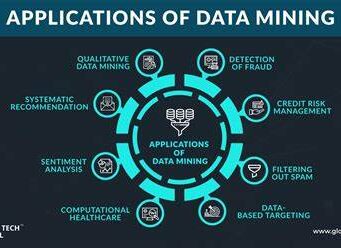data mining tools are essential for organizations looking to extract valuable insights from their datasets. These tools enable businesses to analyze large volumes of data, uncover patterns, and make informed decisions. This article explores various data mining tools, their features, and how they can benefit organizations across different industries.
Understanding Data Mining Tools
Data mining tools are software applications designed to facilitate the extraction of patterns and knowledge from large datasets. They combine statistical analysis, machine learning, and database technology to help users discover insights hidden within their data.
Key Functions of Data Mining Tools
- Data Preprocessing: Cleaning and preparing data for analysis.
- Data Visualization: Presenting data in graphical formats for easier interpretation.
- Pattern Recognition: Identifying trends and patterns within the data.
- Predictive Analytics: Making predictions about future trends based on historical data.
- Reporting: Generating reports and dashboards to communicate findings.
Popular Data Mining Tools
A variety of data mining tools are available, each offering unique features and capabilities. Below, we explore some of the most widely used tools in the industry.
RapidMiner
RapidMiner is a powerful, open-source data science platform that offers a wide range of data mining and machine learning functionalities. It allows users to build predictive models without extensive programming knowledge.
Key Features
- Visual Workflow Designer: Create and customize data processing workflows using a drag-and-drop interface.
- Integration Capabilities: Connects with various data sources, including databases, spreadsheets, and big data platforms.
- Extensive Library: Offers a rich library of algorithms for data mining, machine learning, and data visualization.
KNIME
KNIME (Konstanz Information Miner) is another open-source tool that provides a comprehensive environment for data analytics, reporting, and integration. It’s widely used in academia and industry alike.
Key Features
- Modular Architecture: Users can build workflows using nodes for different tasks, such as data manipulation, analysis, and visualization.
- Data Integration: Easily integrates with various data sources and formats.
- Extensibility: Supports extensions and plugins for specialized data mining tasks.
Weka
Weka is a collection of machine learning algorithms for data mining tasks, implemented in Java. It’s particularly suited for educational purposes and research.
Key Features
- User-Friendly Interface: Provides a simple GUI for easy exploration of datasets and algorithm application.
- Built-In Algorithms: Includes a variety of classification, regression, clustering, and association rule learning algorithms.
- Visualization Tools: Offers tools for visualizing data and the results of machine learning algorithms.
Orange
Orange is an open-source data visualization and analysis tool that emphasizes interactivity and simplicity. It is especially popular for educational purposes.
Key Features
- Interactive Data Mining: Users can create workflows and visualize data in real time.
- Component-Based: Provides widgets for various tasks, allowing users to customize their analysis.
- Extensive Library: Offers a variety of algorithms for machine learning and data mining.
5. SAS Enterprise Miner
SAS Enterprise Miner is a comprehensive data mining software suite widely used in industries such as finance, healthcare, and retail. It provides advanced analytics capabilities.
Key Features
- Advanced Analytics: Offers robust predictive modeling, data mining, and machine learning capabilities.
- Integration with SAS Environment: Seamlessly integrates with other SAS tools for enhanced data processing.
- Deployment Tools: Facilitates the deployment of models into production environments for real-time scoring.
Choosing the Right Data Mining Tool
Selecting the right data mining tool depends on various factors, including organizational needs, technical expertise, and budget constraints. Here are some considerations to help guide the decision:
Ease of Use
Look for tools with user-friendly interfaces that can be navigated easily by team members with varying levels of technical expertise. Tools with drag-and-drop functionalities are often more accessible.
Scalability
Consider whether the tool can handle the volume of data your organization processes. Scalability is crucial for growing businesses that may expand their data needs in the future.
Integration Capabilities
Ensure the tool can integrate with existing data sources, databases, and other software applications used within the organization. This will streamline workflows and enhance data accessibility.
Cost
Evaluate the cost of the tool, including licensing fees, maintenance, and potential costs for additional features or support. Open-source tools may provide cost-effective alternatives for organizations on a budget.
Support and Community
Access to support and a strong user community can greatly enhance the experience of using a data mining tool. Look for tools with active forums, documentation, and customer support options.
Applications of Data Mining Tools
Data mining tools are utilized across various sectors, each leveraging the technology to address specific challenges and improve operations. Here are some prominent applications:
Marketing
In marketing, data mining tools help businesses analyze customer behavior, segment their audience, and optimize marketing campaigns. By identifying trends and preferences, companies can tailor their offerings and improve customer engagement.
Healthcare
In the healthcare sector, data mining tools enable the analysis of patient data to identify disease patterns, predict outbreaks, and improve treatment plans. They play a vital role in personalized medicine and patient care optimization.
Financial Services
Financial institutions use data mining to assess credit risk, detect fraud, and optimize investment strategies. Predictive analytics can help in forecasting market trends and managing portfolios effectively.
Telecommunications
Telecommunications companies leverage data mining tools to analyze customer usage patterns and predict churn. By understanding customer behavior, they can implement targeted retention strategies.
E-commerce
E-commerce businesses utilize data mining to analyze purchase patterns, improve product recommendations, and optimize inventory management. These insights help enhance the overall shopping experience and drive sales.
Challenges in Data Mining
While data mining tools offer significant benefits, organizations may face challenges when implementing these technologies:
Data Quality
Poor data quality can hinder the effectiveness of data mining tools. Organizations must invest in data cleaning and preprocessing to ensure accurate results.
Skill Gap
There may be a lack of skilled personnel who can effectively use data mining tools. Continuous training and development are essential for maximizing the potential of these tools.
Data Privacy
Data mining often involves sensitive information. Organizations must adhere to regulations regarding data privacy and ensure ethical practices in data handling.
Future Trends in Data Mining Tools
As technology evolves, so do data mining tools. Here are some trends to watch for:
AI and Machine Learning Integration
The integration of artificial intelligence and machine learning capabilities will enhance the functionality of data mining tools, enabling more sophisticated analysis and predictive modeling.
Automated Data Mining
Automation in data mining processes will streamline workflows and reduce the need for extensive manual intervention, allowing organizations to focus on higher-level analysis.
Cloud-Based Solutions
Cloud-based data mining tools will continue to gain popularity, providing organizations with scalable solutions that reduce the need for on-premises infrastructure.
Real-Time Analytics
With the rise of IoT and real-time data streams, data mining tools will increasingly offer real-time analytics capabilities, allowing organizations to make timely decisions based on up-to-date information.
Conclusion
Data mining tools are invaluable assets for organizations looking to harness the power of big data. By providing the means to analyze and interpret vast datasets, these tools enable businesses to gain insights that drive informed decision-making. With a variety of options available—from open-source solutions like RapidMiner and Weka to enterprise-grade tools like SAS Enterprise Miner—organizations can find the right fit for their needs.
As data mining continues to evolve, staying abreast of the latest trends and advancements will be essential for organizations seeking to leverage data effectively. For more information on data mining and analytics tools, you can visit Towards Data Science.
Embracing the right data mining tools can lead to improved efficiency, enhanced customer experiences, and ultimately, a competitive advantage in today’s data-driven world.




